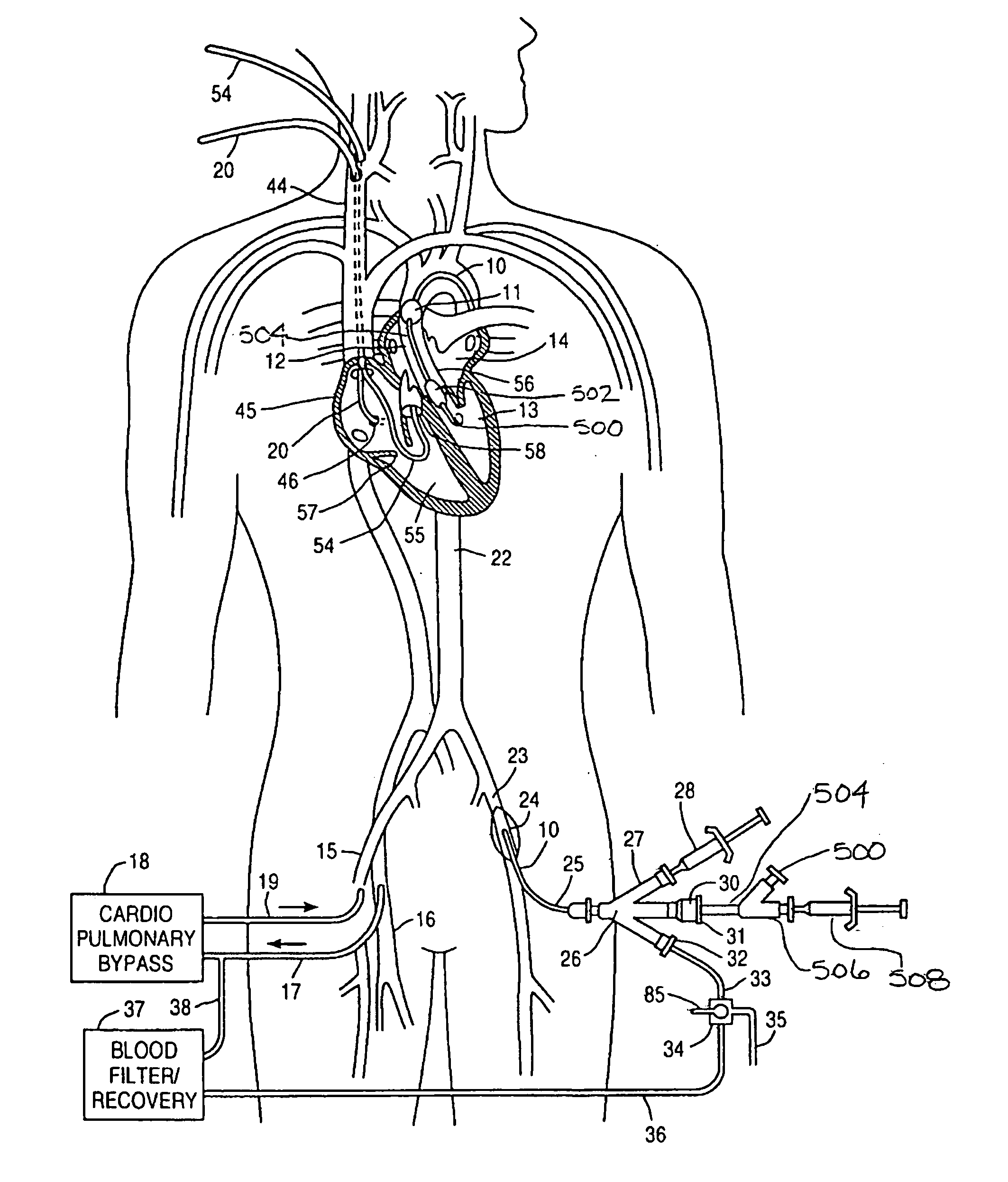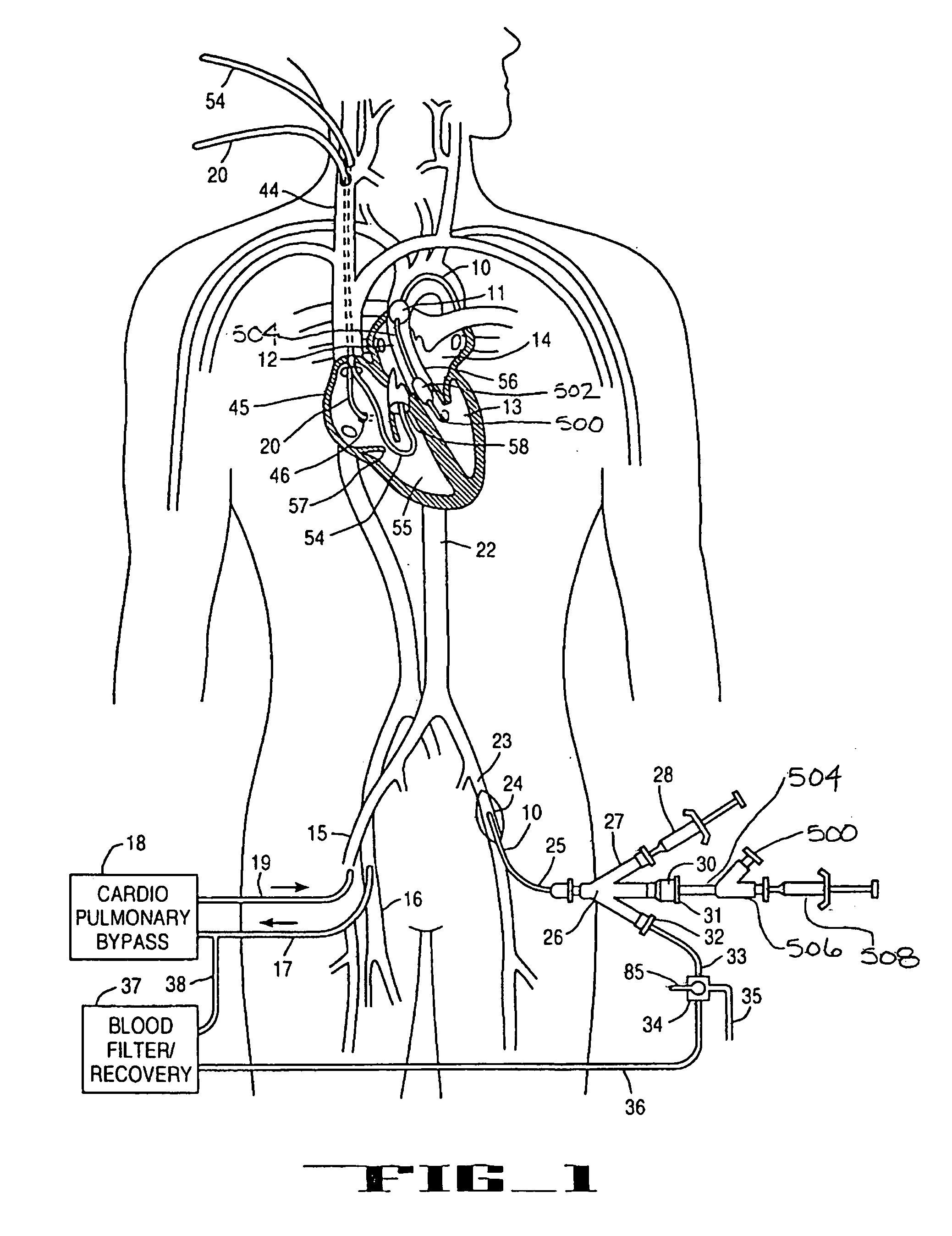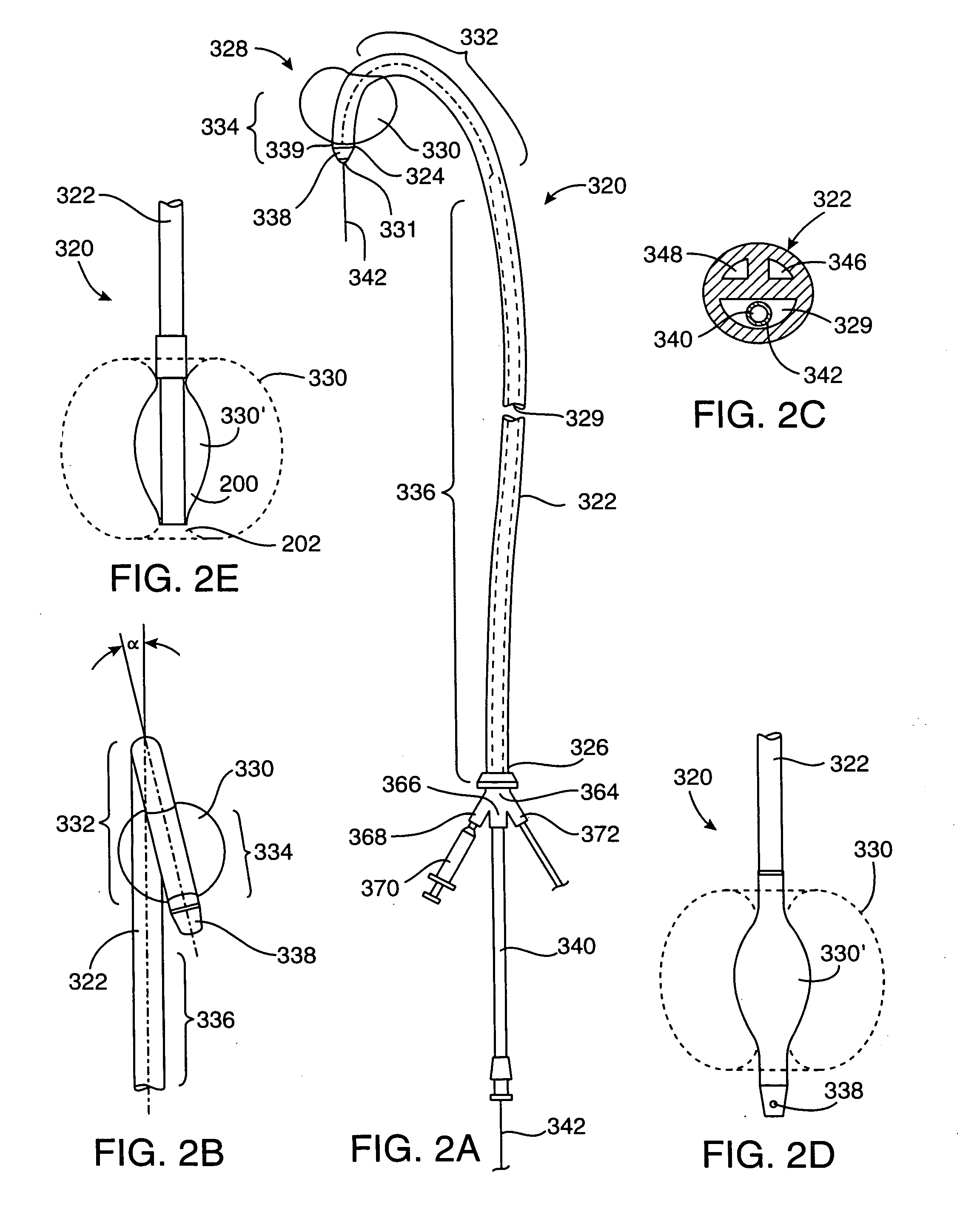System and methods for performing endovascular procedures
- Summary
- Abstract
- Description
- Claims
- Application Information
AI Technical Summary
Benefits of technology
Problems solved by technology
Method used
Image
Examples
third embodiment
[0055] In a third embodiment, shown in FIGS. 4A-4B, partitioning device 320 includes a shaping element 440 positionable in a lumen in shaft 322, such as third inner lumen 348. Shaping element 440 has a proximal end 442, a distal end 444 and a preshaped distal portion 446. Preshaped distal portion 446 may be generally U-shaped as illustrated, or may have an angular, “S”-shaped or other configuration in an unstressed condition, which will shape distal portion 332 to generally conform to at least a portion of the patient's aortic arch. Shaping element 440 is preferably stainless steel, nickel titanium alloy, or other biocompatible material with a bending stiffness greater than that of shaft 322 so as to deflect distal portion 332 into the desired shape. Shaping element 440 may be a guidewire over which shaft 322 is advanced to the ascending aorta, or a stylet which is inserted into third inner lumen 348 after shaft 322 is positioned with balloon 330 in the ascending aorta. In a preferr...
first embodiment
[0079]FIG. 12B shows an intravascular ultrasonic imaging catheter 584 suitable for use with the present system for performing endovascular procedures. The intravascular ultrasonic imaging catheter 584 has a piezoelectric transducer 586 which is mounted in the distal end of the catheter shaft 594 facing proximally. The piezoelectric transducer 586 is activated to produce pulses of ultrasonic energy. An angled reflective, rotating, ultrasonic mirror 588 directs the ultrasonic pulses from the piezoelectric transducer 586 radially outward from the catheter 584 to create an ultrasonic beam that sweeps in a 360° path around the catheter. The ultrasonic pulses are reflected off of structures in the tissue surrounding the ultrasonic imaging catheter 584. The reflected echoes strike the rotating mirror 588 and are directed back toward the piezoelectric transducer 586 which converts the received ultrasonic reflections to electrical signals. The electrical signals from the piezoelectric transd...
second embodiment
[0080]FIG. 12C shows an intravascular ultrasonic imaging catheter 596 suitable for use with the present system for performing endovascular procedures. The intravascular ultrasonic imaging catheter 596 has a focused piezoelectric transducer 598 which is mounted on the distal end of a flexible drive shaft 600 facing radially outward. The piezoelectric transducer 598 and the flexible drive shaft 600 are surrounded by a protective sonolucent sheath 602. The piezoelectric transducer 598 is activated to produce pulses of ultrasonic energy as the flexible drive shaft 600 rotates to create an ultrasonic beam that sweeps in a 360° path around the catheter. The ultrasonic pulses are reflected off of structures in the tissue surrounding the ultrasonic imaging catheter 596. The reflected echoes strike the rotating mirror 588 and are directed back toward the piezoelectric transducer 598 which converts the received ultrasonic reflections to electrical signals. The electrical signals from the piez...
PUM
 Login to View More
Login to View More Abstract
Description
Claims
Application Information
 Login to View More
Login to View More - R&D
- Intellectual Property
- Life Sciences
- Materials
- Tech Scout
- Unparalleled Data Quality
- Higher Quality Content
- 60% Fewer Hallucinations
Browse by: Latest US Patents, China's latest patents, Technical Efficacy Thesaurus, Application Domain, Technology Topic, Popular Technical Reports.
© 2025 PatSnap. All rights reserved.Legal|Privacy policy|Modern Slavery Act Transparency Statement|Sitemap|About US| Contact US: help@patsnap.com



